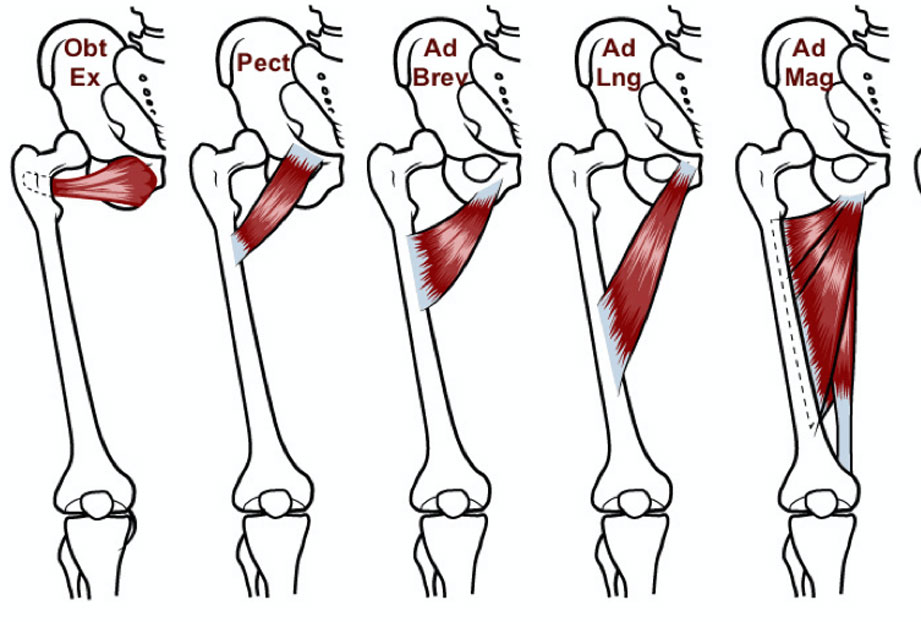Adductor Strain, A Common Cause Of Groin Pain In Footballers
An adductor strain, or injury to the adductor muscles, is a common cause of athletic groin pain, leading to not only discomfort but frequently functional limitation. The hip adductor muscles are an important group of muscles located on the inner thigh, the adductor muscle group play an important role in creating, assisting and stabilizing movement of the hip, pelvis and even knee. The adductors are not surprisingly best known for their role in hip adduction, which is the action of bringing your legs towards, or across the center of the body. The hip adductors of the body include adductor brevis, obturator externus, adductor longus, adductor magnus, pectineus and gracilis. With regard to suffering a groin strain, pulled groin, adductor strain… The muscle most commonly responsible for symptoms is typically the adductor longus muscle.Who Is Most At Risk Of Developing A Groin Strain?
Athletes are the main group of people at risk of suffering an adductor strain. Although a groin strain is not usually a serious injury in the scheme of things, more severe, higher grade adductor injuries can take a significant period of time to recover. It isn’t uncommon for an athlete to require weeks to a few months to return to pre-injury sporting levels. Injury to the groin muscles is frequently associated with high speed running activities. Having a relatively high incidence of adductor strains in sports that demand the athlete to preform combinations of sprinting and kicking, and/or sprinting with changes of direction or jumping. Common sports played throughout Australia with which you could expect to see the occurrence of groin strains include soccer and AFL, this is not discounting rugby and rugby league, however injuries to the adductors in these sports may be more dependent on player position and more prevalent in the athletes who play positions that require a higher kicking and sprinting load.Causes Of A Groin Strain
A “pulled groin” is a common athletic injury among both professional and recreational athletes as a result of overload to the adductor muscles. Overload as mentioned being typically associated with kicking, jumping, running, jumping and and changing direction when running at speed. However an adductor strain is not exclusively a ball sports injury, heavy lifting at work or home and resistance training can also trigger groin pain.Signs And Symptoms Of An Adductor Strain?
Signs and symptoms of groin injury range from the very mild to severe, depending on severity these may vary but as a rule some common symptoms may include:- Pain, pain is often the dominant feature and commonly localises to the upper inner thigh and near the pubic area, the area where your leg seemingly joins the pelvis. This pain is often associated with weakness (true, or perceived) and the pain in some circumstances may be significant enough to impact every day functions. Simple daily activities like getting in and out of a car, or putting a pair of pants on may cause fairly strong pain.
- Pain with palpation, both the adductor tendons and a little further down the thigh the muscle belly will often be painful, or feel “tight” with palpation.
- Pain provoked with a groin squeeze test, a test where the individual aims to forcefully squeeze their heels together. Pain with this test is frequently accompanied with weakness, where the individual feels unable to strongly squeeze the heels together.
- Stretching pain, a feeling of tightness or pain associated with stretching the groin muscles. Where Ppain stretching is potentially elicited through a number of movements, most commonly through moving the hip into abduction which is the opposite movement to adduction. Abduction at the hip being the movement whereby the legs are moved away from the midline of the body.
- An acute groin strain depending on its severity may present with some swelling and bruising in the groin and upper inner thigh. Bruising will sometimes extend down the inner thigh towards the knee with both swelling and bruising often being noticeable in the first few days after injury, lasting at times a couple of weeks.
- Discomfort walking and even needing to move around with a painful limp is not uncommon, again this is clearly severity dependent but pain walking, running and in particular any activities involving changing direction or acceleration/deceleration is a regular feature of a pulled groin.



